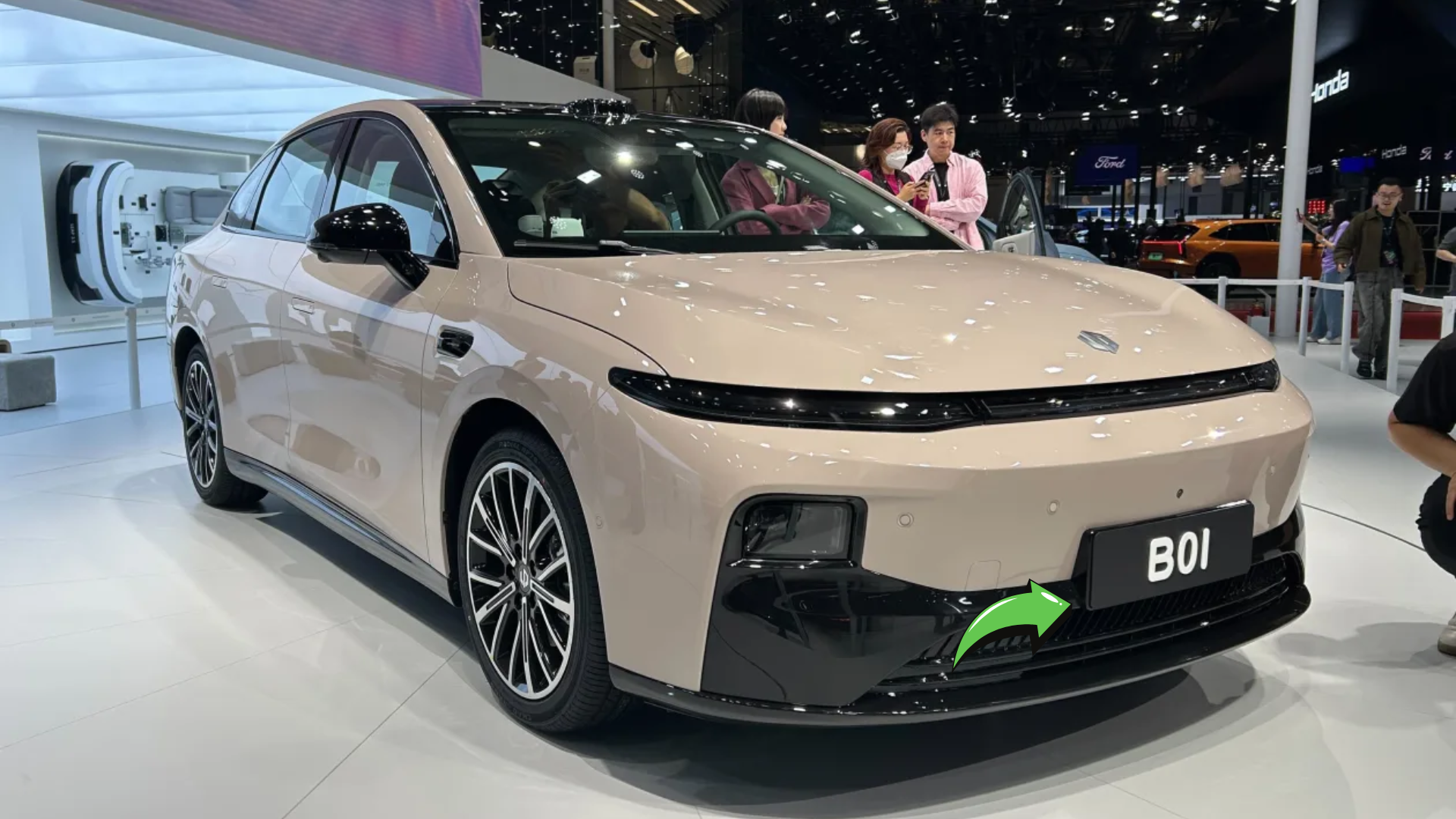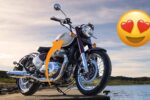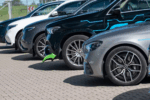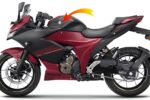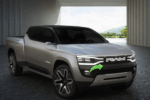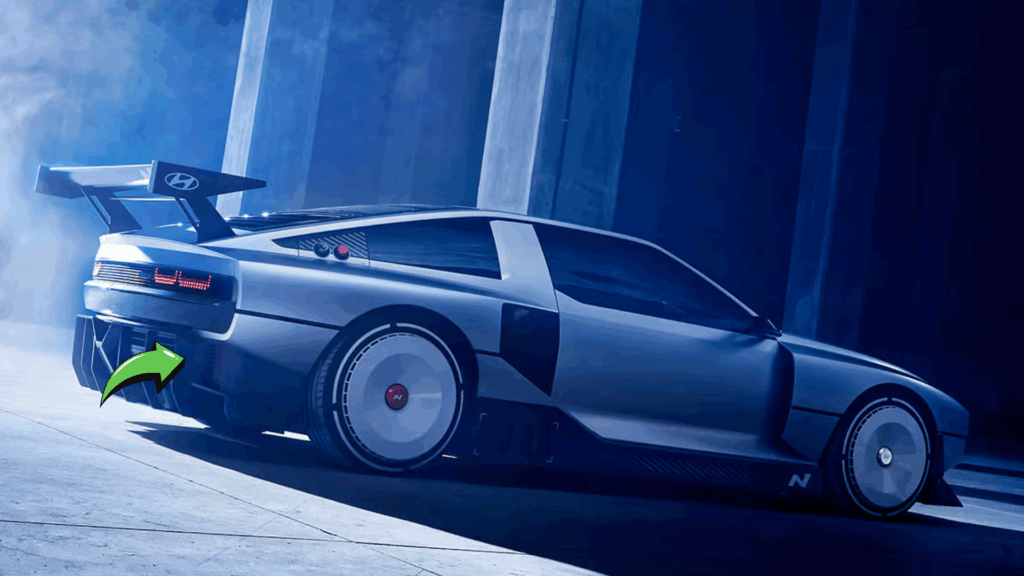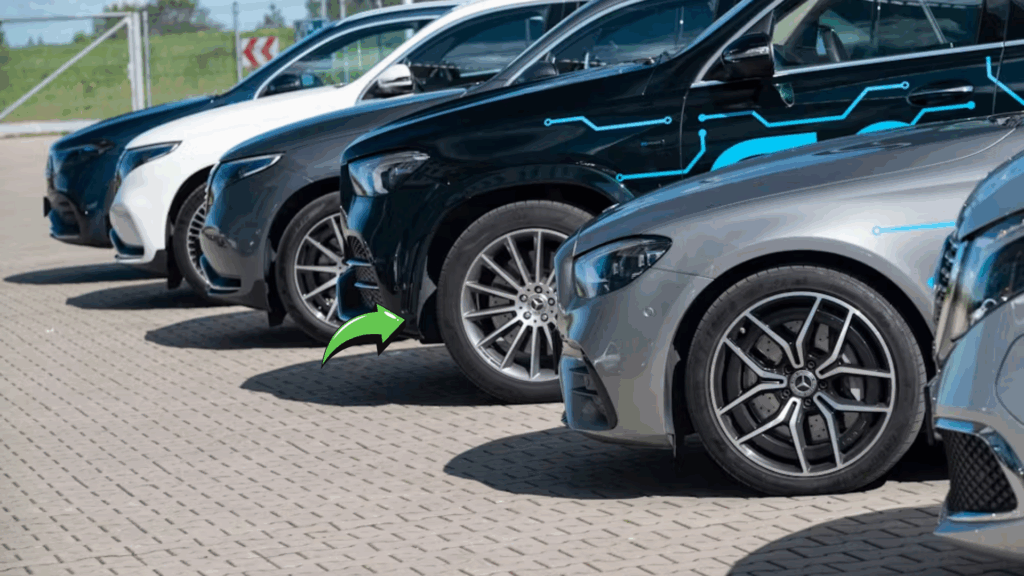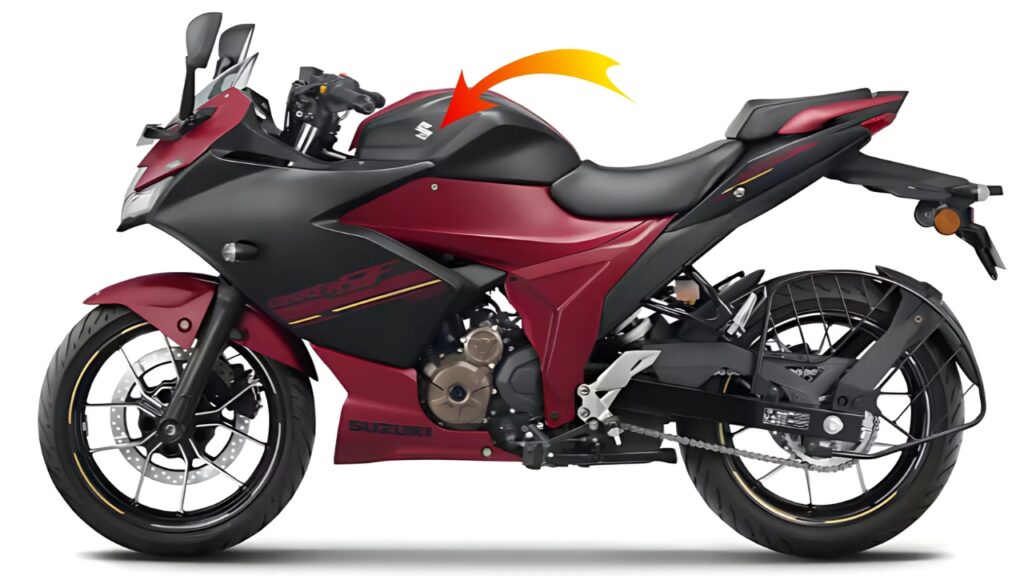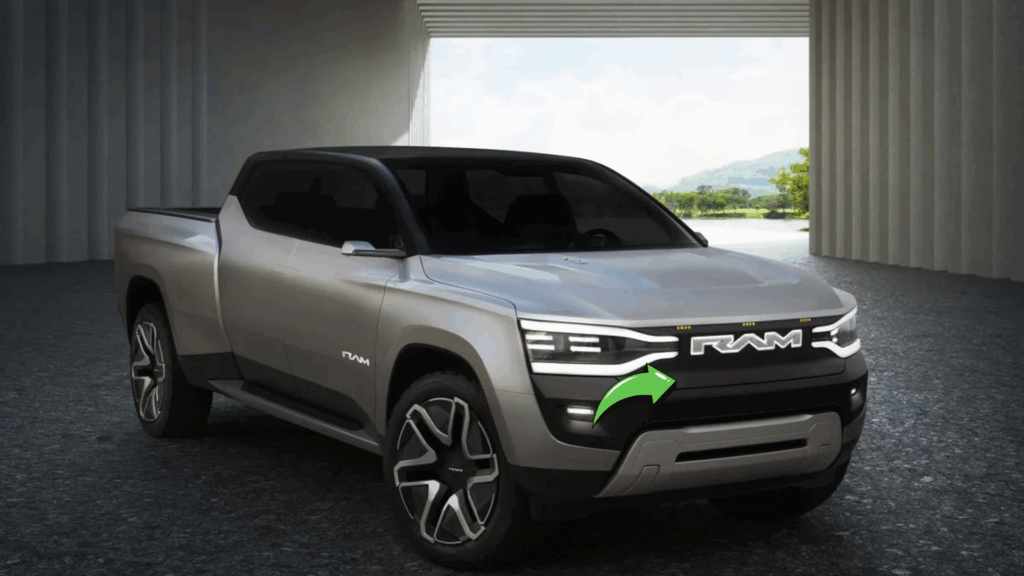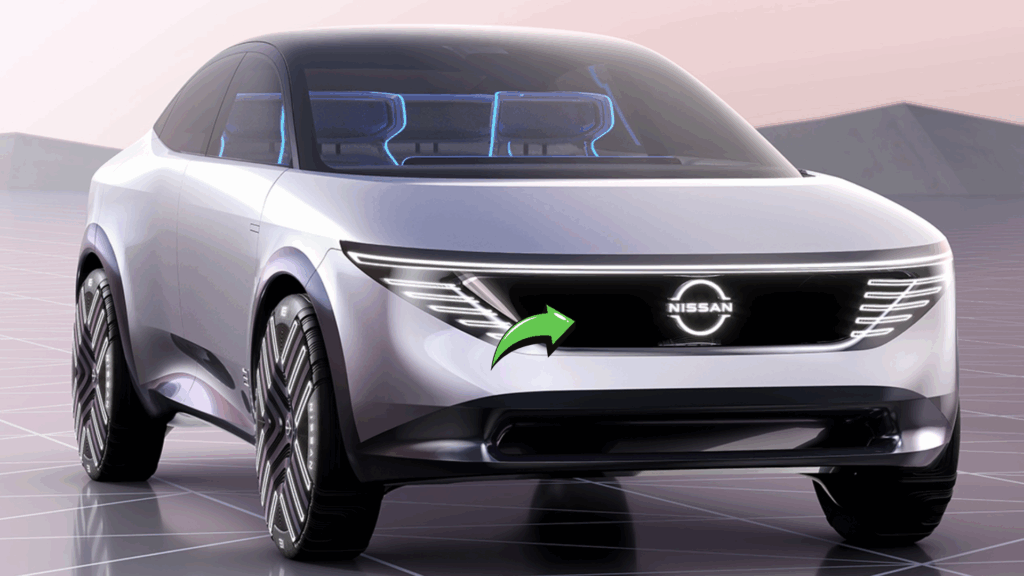Chinese automaker Leapmotor has just unveiled its newest electric vehicle that’s generating significant buzz across automotive circles. The B01 sedan represents their most ambitious international offering to date.
This sleek four-door EV aims directly at Tesla’s market dominance, specifically targeting Model 3 customers with a substantially lower price point. Industry watchers are calling this a potential game-changer.
Table of Contents
Leapmotor’s Bold Entry into the Global EV Market
Leapmotor isn’t exactly a household name in Western markets. Founded in 2015, this relatively young Chinese manufacturer has been steadily building its reputation in domestic markets.
The company’s previous models showed promise but remained largely confined to China’s borders. With the B01, Leapmotor signals clear international ambitions with a vehicle designed for global appeal.
“We’ve been planning this strategic move for years,” remarked Zhang Wei, Leapmotor’s Chief Strategy Officer at the Shanghai unveiling event. “The B01 represents everything we’ve learned about electric vehicle manufacturing, refined into a package that can truly compete worldwide.”
Unlike many Chinese EVs that struggle with brand recognition abroad, the B01 arrives with remarkable timing. Cost-conscious consumers increasingly seek alternatives to premium-priced EVs from established manufacturers.
Leapmotor’s parent company, Stellantis, acquired a significant stake in the Chinese automaker last October. This partnership provides crucial manufacturing experience and distribution networks that many Chinese EV startups lack.
Design Philosophy: Balancing Familiarity and Innovation
The B01’s exterior strikes an interesting balance between conventional sedan aesthetics and forward-thinking EV design. Its silhouette feels reassuringly familiar while incorporating distinctive character lines.
Measuring 4,780mm long with a 2,825mm wheelbase, the B01 sits comfortably in the mid-size sedan category. These dimensions actually exceed the Tesla Model 3’s footprint slightly, promising more interior space.
Front fascia elements include a streamlined closed grille area and sharply angular LED headlights. These blend into a smoothly contoured hood that enhances aerodynamic efficiency.
The vehicle’s profile reveals thoughtful attention to proportions. A gently sloping roofline transitions into a short rear deck, creating a fastback-inspired look without sacrificing rear headroom.
“We wanted something that looks substantial and premium without appearing overly futuristic,” explained Li Chen, Leapmotor’s Design Director. “Many potential EV buyers still prefer vehicles that don’t scream ‘look at me, I’m electric’ through exaggerated styling elements.”
Also Read: Top Reasons to Choose the Hyundai Tucson for Your Next SUV
Interior Comfort and Technology Integration
Stepping inside the B01 reveals Leapmotor’s commitment to perceived value. Materials throughout the cabin deliver a premium feel that belies the vehicle’s accessible price point.
The minimalist dashboard centers around a 15.6-inch touchscreen that handles most vehicle functions. Unlike some competitors, Leapmotor retained physical controls for frequently accessed features like climate settings and volume adjustment.
Rear passengers enjoy generous legroom thanks to the extended wheelbase and the benefits of the dedicated EV platform. The flat floor further enhances the sensation of spaciousness throughout the cabin.
Storage solutions abound, including a front trunk (frunk) offering 88 liters of additional cargo space. The conventional trunk provides 425 liters, expanding to 1,130 liters with rear seats folded down.
Ambient lighting with 128 color options allows for personalized interior atmospheres. This seemingly small feature demonstrates Leapmotor’s attention to the details that enhance everyday ownership satisfaction.
Performance Metrics That Challenge Expectations
Beneath the B01’s understated exterior lies impressive engineering. Multiple powertrain configurations will be offered across different markets, catering to varying performance preferences and price points.
The standard rear-wheel drive variant produces 218 horsepower and 320 Nm of torque. This enables a respectable 0-100 km/h time of 7.2 seconds – brisk enough for confident highway merging and urban driving.
For performance enthusiasts, the dual-motor all-wheel drive version delivers 315 horsepower combined. This reduces the 0-100 km/h sprint to just 5.3 seconds, putting it in direct competition with the Tesla Model 3 Long Range.
Most importantly, these performance figures come without significant range penalties. The Cell-to-Chassis battery technology Leapmotor pioneered enhances efficiency while reducing structural weight.
Battery Technology and Range Specifications
Leapmotor offers two battery options across the B01 lineup. The standard version features a 58.8 kWh LFP (Lithium Iron Phosphate) battery delivering approximately 410 km (255 miles) of range under WLTP testing protocols.
The extended range variant incorporates a 69.9 kWh NMC (Nickel Manganese Cobalt) battery pack. This pushes range figures to an impressive 530 km (329 miles), positioning it competitively against established rivals.
Fast charging capabilities allow the B01 to replenish from 10% to 80% in approximately 30 minutes when connected to a 150 kW DC fast charger. Home charging with an 11 kW wallbox completes a full charge in roughly 6.5 hours.
Leapmotor’s proprietary battery management system incorporates advanced thermal regulation. This maintains optimal cell temperatures even in extreme weather conditions, preserving range and battery longevity.
The following table provides a direct comparison between the Leapmotor B01 and its primary competitor:
| Specification | Leapmotor B01 (Extended Range) | Tesla Model 3 (2024) |
|---|---|---|
| Base Price | $27,500 (estimated) | $38,990 |
| Range (WLTP) | 530 km (329 miles) | 554 km (344 miles) |
| Battery Size | 69.9 kWh | 60 kWh (estimated) |
| Power | 315 hp (dual motor) | 325 hp (dual motor) |
| 0-100 km/h | 5.3 seconds | 4.9 seconds |
| Charging Speed | 150 kW | 250 kW |
| Wheelbase | 2,825 mm | 2,875 mm |
| Screen Size | 15.6 inches | 15.0 inches |
| Driver Assist | Level 2+ | Level 2+ (FSD optional) |
Technological Features That Enhance Daily Usability
The B01 arrives equipped with Leapmotor’s Leap Pilot 3.0 advanced driver assistance system. This suite includes adaptive cruise control, lane centering, blind spot monitoring, and automated parking assistance.
Seventeen high-definition cameras and sensors monitor the vehicle’s surroundings continuously. This sensor array enables features like traffic sign recognition and forward collision avoidance with pedestrian detection.
The central infotainment system runs Leapmotor’s proprietary Leap OS, built on an Android-based architecture. This enables seamless smartphone integration and over-the-air updates to expand functionality over time.
“We’ve prioritized intuitive operation above all else,” noted Zhang Yong, Leapmotor’s User Experience Director. “Fancy features mean nothing if owners struggle to access them during everyday driving situations.”
Voice command functionality understands natural language inputs with remarkable accuracy. This allows drivers to adjust climate settings, navigation, and entertainment without taking their hands off the steering wheel.
Pricing Strategy That Disrupts Established Players
Perhaps the B01’s most compelling feature is its aggressive pricing structure. Though final figures vary by market, Leapmotor targets a starting price approximately 30% below comparable Tesla Model 3 configurations.
In China, the base model launches at approximately 159,800 yuan (roughly $22,000). European pricing will likely start around €29,900 (approximately $32,500), with US pricing expected to begin at $27,500 before incentives.
This pricing approach doesn’t merely undercut Tesla. It challenges virtually every established EV manufacturer while offering features typically reserved for vehicles in higher price brackets.
“We’re not interested in being perceived as merely a budget option,” emphasized CFO Liu Jian during investor briefings. “The B01 delivers genuine value through thoughtful engineering and strategic component sourcing.”
Industry analysts note this pricing strategy resembles early market approaches by companies like Hyundai and Kia. These brands initially competed on price before establishing reputations for reliability and value.
Manufacturing Capabilities and Quality Control
Leapmotor recently completed construction of a state-of-the-art manufacturing facility in Jinhua, China. This plant incorporates advanced automation systems comparable to those found in established Western and Japanese factories.
Production capacity currently stands at 300,000 units annually, with plans to expand as global demand increases. The factory’s modular design allows for rapid reconfiguration as new models enter production.
Quality control measures include over 1,200 inspection points throughout the assembly process. Every completed vehicle undergoes comprehensive testing before receiving shipping approval.
“Manufacturing consistency represents our greatest challenge and opportunity,” acknowledged Production Director Wang Li. “We understand Western consumers have high expectations regarding fit and finish.”
Stellantis engineers have contributed valuable expertise to refine production processes. This collaboration ensures the B01 meets global safety and quality standards despite its competitive price positioning.
Global Expansion Plans and Market Reception
Leapmotor’s international rollout begins with European markets this summer. Initial availability will include Germany, France, Netherlands, Norway, and the UK, with North American entry planned for early next year.
The company has already established partnerships with established dealer networks in key markets. This approach avoids the costly process of building a retail presence from scratch while leveraging existing customer relationships.
Pre-orders have reportedly exceeded expectations significantly. Industry sources indicate over 25,000 reservations were placed within 48 hours of the official unveiling, primarily from European customers.
“Consumer receptiveness has been remarkably positive,” noted Marketing Director Sarah Johnson. “Particularly among younger buyers who prioritize value and technology integration over traditional brand prestige.”
Several prominent automotive publications have secured early test vehicles. Initial driving impressions suggest the B01 delivers refinement levels comparable to EVs costing substantially more.
Challenges and Future Outlook
Despite promising early indicators, Leapmotor faces significant hurdles. Establishing service networks capable of supporting a growing vehicle population represents a particular challenge for any emerging brand.
Political headwinds regarding Chinese-manufactured vehicles create additional complications. Potential tariffs could impact pricing strategies in key markets, particularly the United States.
Consumer perceptions regarding Chinese automotive products continue evolving rapidly. Early adopters appear increasingly willing to consider alternatives to established brands when value propositions prove compelling.
“Brand building requires patience and consistency,” observed automotive industry analyst Robert Chen. “Leapmotor appears committed to the long game rather than expecting overnight success.”
The company has already announced plans for six additional global models by 2027. This ambitious product roadmap indicates confidence in their fundamental business approach and manufacturing capabilities.
Environmental Considerations and Sustainability
Leapmotor emphasizes its commitment to sustainable manufacturing practices. Their Jinhua facility incorporates extensive solar power generation, covering approximately 28% of energy requirements.
Material selection throughout the B01 prioritizes recyclability. Over 71% of components can be effectively reclaimed at the vehicle’s end-of-life, exceeding regulatory requirements in most markets.
Battery recycling partnerships ensure responsible handling of depleted cells. The company guarantees a minimum 80% capacity retention for eight years or 160,000 kilometers, providing consumer confidence in long-term usability.
“Environmental responsibility must extend beyond the tailpipe,” stated Lei Zhao, Leapmotor’s Sustainability Director. “True progress requires examining every aspect of vehicle production and lifecycle management.”
These initiatives reflect growing consumer demand for authentic environmental commitment. Younger buyers increasingly consider production methods and corporate values when making purchase decisions.
Frequently Asked Questions
When will the Leapmotor B01 be available in the United States?
North American deliveries are scheduled to begin in the first quarter of next year, pending final regulatory approvals.
Does the B01 support Tesla Superchargers?
Yes, models destined for North America and Europe will include NACS compatibility, allowing access to Tesla’s extensive charging network.
What warranty coverage does Leapmotor provide?
The company offers comprehensive 5-year/100,000 km vehicle coverage plus 8-year/160,000 km battery protection with guaranteed 80% capacity retention.
How does Leapmotor provide service in new markets?
Through partnerships with established dealer networks and mobile service capabilities similar to Tesla’s approach.
